A Definitive List of Common Phobias: Spiders, Germs, Heights, and More
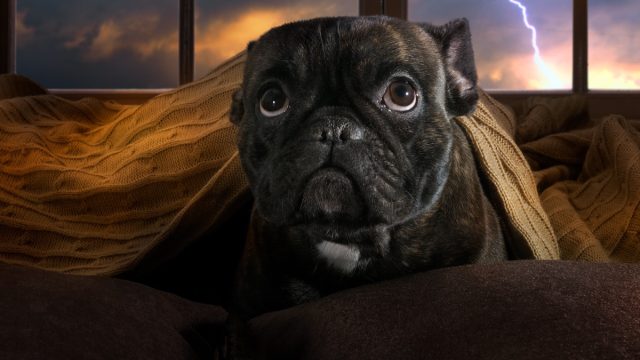
Everyone’s scared of something, but some of us suffer from crippling fear of everyday things. Research shows that about 75 percent of the population has a fear of public speaking, making it one of the most common phobias in the world. Other fear-based conditions are more rare, such as octophobia, a hatred for the number eight, or leukophobia, a fear of the color white. If you want to learn more about the commonplace occurrences that frighten enough of your fellow humans that science has named them, read on. We’re bringing you the ultimate list of phobias, from well-known frights to more obscure ones you may have never heard of before.
RELATED: 13 Bizarre Facts About Friday the 13th You Never Knew.
What Are Phobias?
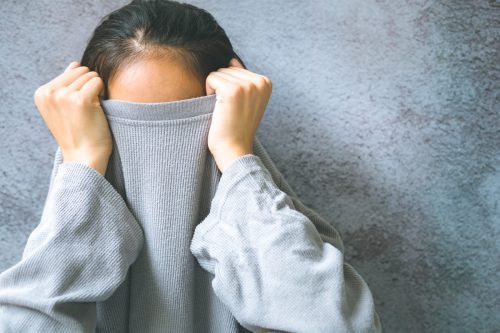
The American Psychiatric Association (APA) defines a phobia as an “excessive and persistent fear of a specific object, situation or activity that is generally not harmful.” A phobia is considered to be an anxiety disorder—distinguishable from other fears based on the degree to which an individual is affected along with their inability to overcome the issue. According to the Diagnostic and Statistical Manual of Mental Disorders, 5th Edition (DSM-5), there are three main types of phobias: specific phobias, agoraphobia, and social phobias.
Specific Phobias
A specific phobia is an intense fear of a particular object or situation, such as a fear of spiders or of heights. According to mental health experts, about 12.5 percent of adults in the United States, the majority of them women, suffer from one of more specific phobias.
Agoraphobia
Agoraphobia is the fear of places or situations that may cause feelings of being trapped, helpless, or embarrassed. Those suffering from the condition may avoid public transportation, open or enclosed spaces, standing in line, and/or large crowds. It’s estimated that just 1.7 percent of the population deals with agoraphobia, with symptoms usually presenting before the age of 35.
Social Phobias
Finally, there are social phobias or social anxiety disorders. These terms describe a fear of social situations that may cause an individual to feel embarrassed, humiliated, or judged by others. Oftentimes, those affected will avoid social gatherings, public speaking, or social situations where they may have to interact with strangers. It’s estimated that about 12.1 percent of U.S. adults will experience a social phobia at some point during their lives.
If you’re interested in learning more, then be sure to keep reading.
The Ultimate List of Phobias
1. Fear of Heights (Acrophobia)
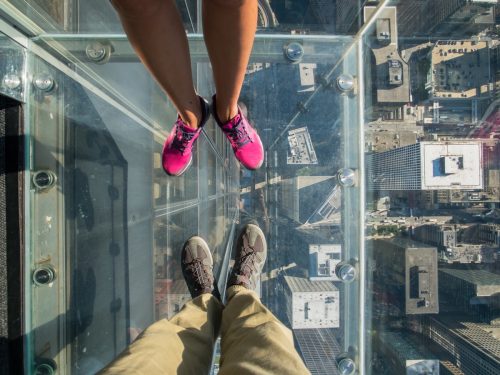
One of the most common fears experienced worldwide, acrophobia is the specific term for the fear of heights. In addition to avoiding rollercoasters or high observation decks, individuals with more severe forms of the condition may even experience panic and anxiety when crossing a bridge or looking at a photograph of a tall peak. In recent years, virtual reality experiences have been developed to provide exposure therapy to those attempting to conquer this fear.
2. Fear of Flying (Aerophobia)

Have you ever experienced a panic attack before getting on an airplane? If so, you aren’t alone. More than 25 million adults in the United States suffer from a fear of flying, according to the Cleveland Clinic.
Those affected by aerophobia may experience extreme anxiety or panic attacks during a flight, especially during take-off and landing. Others suffer from a general fear of being “trapped” on the aircraft. Interestingly enough, very few people with the condition are actually afraid of dying during their flight. According to mental health experts, visualizations can help reduce anxiety prior to their next departure.
RELATED: 46 Airplane Facts You Should Know Before Booking Your Next Trip.
3. Fear of Thunder (Astraphobia)

If you have pets, then you likely know that many dogs and cats suffer from this condition—and some humans do, too. Astraphobia is the name for the fear of thunder or lightning. Most people affected are children, but the phobia can sometimes last into adulthood.
4. Fear of Spiders (Arachnophobia)
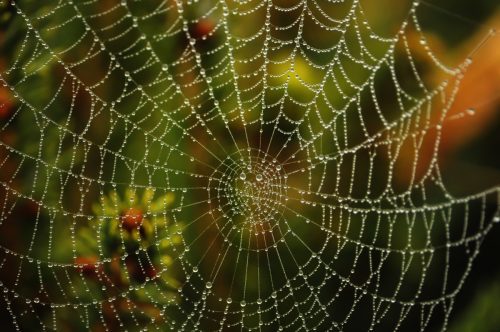
Next up on our list of phobias is arachnophobia—a severe fear of spiders and spider webs. It’s estimated that this phobia affects anywhere from three to 15 percent of the population. Women are more likely to be afflicted than men.
5. Fear of Public Speaking (Glossophobia)
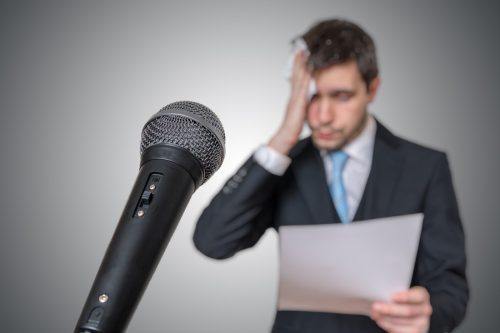
As mentioned, the fear of public speaking is one of the most common phobias around the world. Individuals suffering from glossophobia avoid situations in which they have to speak in front of large crowds for fear of being judged, embarrassed, or rejected. It’s estimated that the condition affects as many as one in four Americans.
6. Fear of Being Touched (Haphephobia)
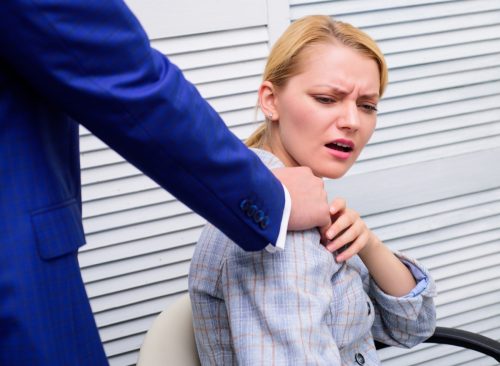
This social phobia is an intense, overwhelming fear of being touched. Individuals with this condition are intolerant of any kind of touch, even initiated by friends or family. Haphephobia is not a physical condition and should not be confused with allodynia, or a hypersensitivity to touch.
7. Fear of the Sun (Heliophobia)
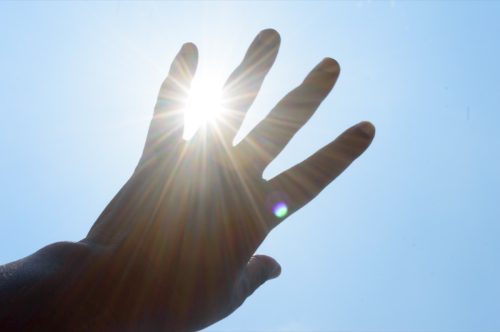
Individuals suffering from heliophobia experience an extreme fear of the sun, sunlight, or other types of bright light. In some cases, the condition is related to a fear of developing skin cancer or other illnesses caused by prolonged sun exposure. People with heliophobia may change their lifestyle or work schedules to avoid daylight hours.
RELATED: 50 Summer Facts That’ll Make You Even More Excited for the Season.
8. Fear of Germs (Mysophobia)

Mysophobia also extends to an extreme fear of dirt or contamination. The steps people take to avoid situations that may expose them to germs tend to become more severe over time and may parallel other conditions, such as obsessive-compulsive disorder. Emotional trauma is typically to blame, though any family history of anxiety disorders should also be taken into account.
9. Fear of the Dark (Nyctophobia)
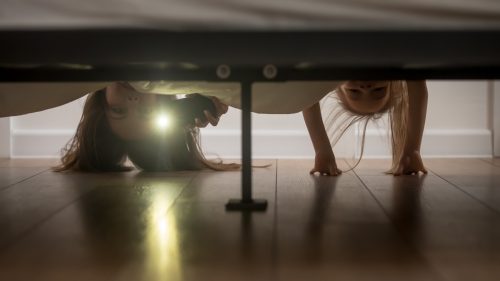
Also known as scotophobia or lygophobia, this phobia mostly impacts children. According to WebMD, kids between the ages of six and 12 are most likely to experience a fear of the dark. Fortunately, most are able to outgrow it. This phobia can also include a fear of what can’t be seen in the dark, which is made worse by noises that aren’t associated with any visual cues.
10. Fear of Gaining Weight (Obesophobia)
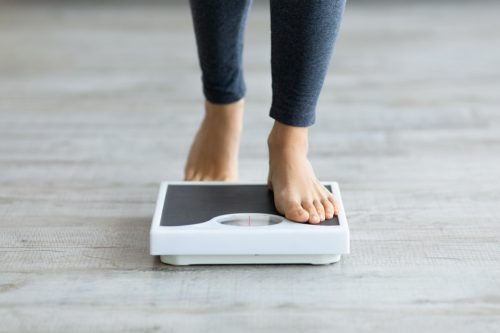
Also known as pocrescophobia, this condition is most prevalent among adolescent women but can also present in men as well. In addition to anxiety over gaining weight, individuals may experience fear responses to situations associated with weight gain, such as being near a scale or attending social events with food.
RELATED: 37 Weird Facts About the Human Body That Will Blow Your Mind.
11. Fear of Snakes (Ophidiophobia)

Ophidiophobia is one of the most common specific phobias in the world. The condition may be associated with herpetophobia, a fear of all reptiles, or zoophobia, the fear of all animals. It’s estimated that about one in 10 U.S. American adults have a fear of snakes.
12. Fear of Death (Thanatophobia)

While some people suffering from thanatophobia experience a fear of being dead, others are much more preoccupied with the dying process. It’s been reported that both men and women experience a peak in this kind of anxiety during their 20s, though women are more likely to experience a secondary spike at some point in their 50s.
13. Fear of Childbirth (Tokophobia)
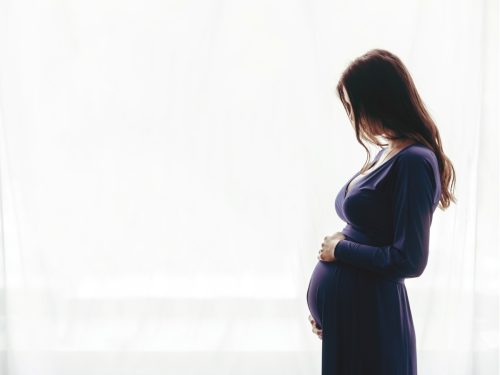
This phobia presents in two different ways: Primary tokophobia affects women who have never given birth but experience extreme anxiety over the prospect. Secondary tokophobia presents in women who have already given birth and is a form of post-traumatic stress disorder (PTSD). Current research suggests that the condition currently affects anywhere from three to 14 percent of the population.
14. Fear of Injections (Trypanophobia)

According to the CDC, upwards of 25 percent of U.S. American adults suffer from a fear of needles. The majority of these cases developed during childhood. Those who have been diagnosed with trypanophobia experience significant distress when contemplating a needle stick. Though the condition is typically associated with past trauma, some suspect that there is also a genetic component as well.
15. Fear of Circle Clusters (Trypophobia)

Trypophobia refers to an aversion or repulsion to objects containing repetitive patterns or clusters of small holes. Experts believe the phobia can be traced back to our early evolution, since these shapes bear a strong resemblance to things we once had to avoid to survive, including infectious diseases and bees. Some studies suggest that about 17 percent of children and adults are affected.
RELATED: 75 Weird Animal Facts Everyone Should Know.
Symptoms of Phobias
Most phobias are accompanied by certain symptoms that help differentiate them from other fears or anxieties. Some of the most common include:
- Extreme or irrational fear of specific triggers
- An inability to control one’s response to fear
- Urge to flee
- Anxiety, panic, or fear
- Shaking or trembling
- The presence of another mental health disorder
- Rapid heartbeat
- Panic attacks
- Avoidance behaviors
- Shortness of breath
Treatment for Phobias
Different treatment options are available to those suffering from common phobias. Some of the most popular methods include:
- Exposure Therapy: This method involves confronting the phobic object in different ways. These confrontations are conducted in a created safe space, where patients are reminded that they are in no actual danger. Practitioners are increasingly relying on virtual reality experiences to carry out this form treatment.
- Cognitive Behavioral Therapy: Treating phobias can also include addressing problematic or irrational thinking. Cognitive behavioral therapy (CBT) helps individuals overcome their intense fears by helping them change specific thoughts or behaviors.
- Relaxation Techniques: Deep breathing, progressive muscle relaxation, visualization, and guided imagery are also useful in treating phobias. These methods are often applied when undergoing exposure therapy.
Wrapping Up
That’s it for our list of phobias, but be sure to check back in with us soon for even more facts. You can also sign up for our newsletter to enjoy similar content, as well as the latest in wellness, entertainment, and travel.